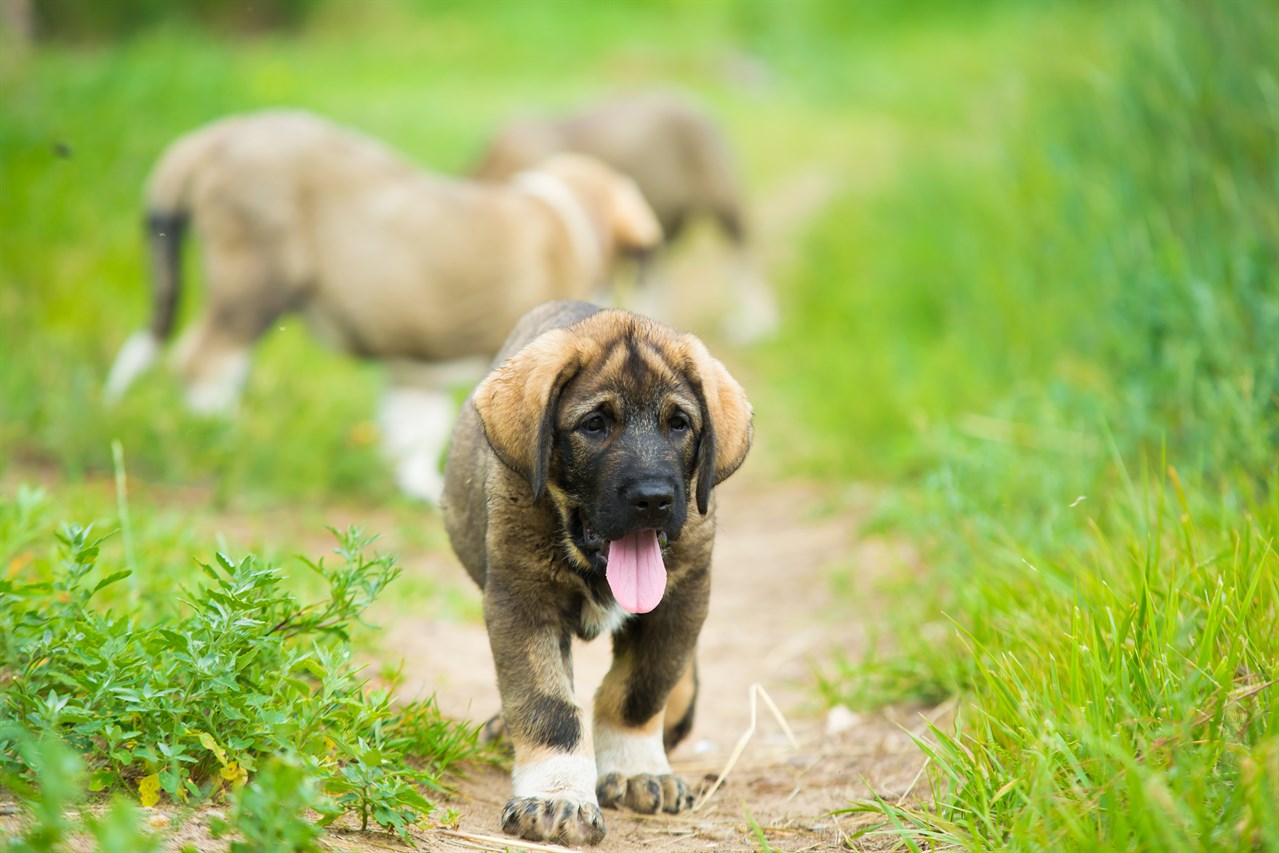The Majestic Spanish Mastiff: Guardian of the Spanish Countryside

In the world of canine companions, few breeds can rival the imposing presence and gentle nature of the Spanish Mastiff. With their impressive size, protective instincts, and rich history, Spanish Mastiffs have earned their place as beloved guardians of the Spanish countryside and cherished companions for families around the world. In this comprehensive exploration, we will delve into the history, characteristics, and unique qualities of the Spanish Mastiff.
Breed History
The history of the Spanish Mastiff can be traced back several centuries, with roots firmly planted in the Iberian Peninsula. This ancient breed was originally developed to protect livestock from predators and thieves. Spanish Mastiffs were instrumental in safeguarding sheep and cattle during the transhumance, a traditional practise of seasonal livestock migration in Spain. Their strong and dependable nature made them indispensable working dogs in rural Spain.
Also Known As
The Spanish Mastiff is also known as the Mastín Español or Mastín de España by lovers of the breed.
Breed Group and Size
The Spanish Mastiff is classified within the Working Group by major kennel clubs, such as the American Kennel Club (AKC) and the Fédération Cynologique Internationale (FCI). These dogs are known for their sheer size and strength. Adult males typically stand between 71 to 89 cm at the shoulder, with females slightly smaller. Their weight can range from 63 to 100 kg or more. This remarkable size makes them one of the largest dog breeds in the world.
Breed Coat, Colour, and Appearance
The Spanish Mastiff boasts a thick double coat that provides insulation against the harsh Spanish climate. The outer coat is straight and coarse, while the inner coat is soft and dense. Their coat can be of various colours, including fawn, black, red, and brindle. A distinguishing feature of this breed is its distinctive facial wrinkles and loose skin, giving them a noble and wise appearance.
Is Mastiff the Strongest Dog?
The title of the "strongest dog" is a matter of debate and can depend on various factors, including the definition of strength (bite force, pulling power, endurance, etc.). While Spanish Mastiffs are incredibly strong and robust, other breeds, such as the Kangal and the English Mastiff, also possess remarkable strength.
What is the Bite Force of a Spanish Mastiff?
The bite force of a Spanish Mastiff can vary among individuals, but it is estimated to be around 100 to 113 kg per square inch (psi). This formidable bite force is more than enough to deter potential threats and protect their charges.
What Are Spanish Mastiffs Known For?
Spanish Mastiffs are renowned for their role as livestock guardians. They are known for their calm and gentle temperament, which contrasts sharply with their imposing size. These dogs are steadfast protectors of their flock or family, often showing unwavering loyalty.
What Is the Difference Between a Spanish Mastiff and a St. Bernard?
While both the Spanish Mastiff and the St. Bernard are large, imposing breeds, they originate from different regions and serve distinct purposes. The St. Bernard hails from the Swiss Alps and is primarily known for its rescue work in the mountains. In contrast, the Spanish Mastiff is Spanish in origin and excels as a livestock guardian. Additionally, the Spanish Mastiff tends to be more reserved and protective, whereas the St. Bernard is often more sociable and friendly.
Are Spanish Mastiffs Good with Cats?
Spanish Mastiffs can coexist peacefully with cats and other animals if properly socialised from an early age. Their guardian instincts may lead them to be cautious around smaller animals, but with the right introductions and supervision, they can be compatible with feline companions.
Do Spanish Mastiffs Drool?
Yes, like many large and mastiff-type breeds, Spanish Mastiffs can be prone to drooling, especially after eating or drinking. Their loose jowls and abundant skin can collect saliva. Regular cleaning and keeping a towel handy can help manage this trait.
Is a Mastiff Bigger than a Cane Corso?
Yes, the Spanish Mastiff is generally larger than the Cane Corso. While both breeds are part of the Mastiff family, the Cane Corso is considered a medium to large breed, with males typically weighing between 41 to 54 kg, while females are slightly smaller. In contrast, Spanish Mastiffs can easily exceed 63 kg and can weigh up to 100 kg or more.
In conclusion, the Spanish Mastiff is a magnificent breed deeply rooted in Spain's agricultural and pastoral history. Their imposing size and gentle nature make them exceptional companions and guardians. Whether you seek a devoted family pet or a steadfast protector for your livestock, the Spanish Mastiff stands as a testament to the enduring bond between humans and their canine counterparts.
Continue reading our Spanish Mastiff in-depth articles
- Spanish Mastiff Temperament and Behaviour
- Spanish Mastiff Training and Socialisation
- Spanish Mastiff Toilet Training
- Spanish Mastiff Barking Habits
- Spanish Mastiff Grooming Requirements
- Spanish Mastiff Shedding Behaviour
- Spanish Mastiff Sleeping Behaviour
- Spanish Mastiff Diet and Feeding Requirements
- Spanish Mastiff Average Lifespan
- Spanish Mastiff Exercise Requirements
- Spanish Mastiff Common Health Issues
- Spanish Mastiff Suitability Guide
- Spanish Mastiff Advantages
- Spanish Mastiff Disadvantages
- Spanish Mastiff Cost to Buy and Own
- Spanish Mastiff Clubs and Links
- Selling Spanish Mastiff Puppy Litters and Dogs
- Buying Spanish Mastiff Puppies and Dogs
- Spanish Mastiff Alternatives
Spanish Mastiff puppies for sale
- Find Spanish Mastiff puppies for sale in ACT
- Find Spanish Mastiff puppies for sale in NSW
- Find Spanish Mastiff puppies for sale in NT
- Find Spanish Mastiff puppies for sale in QLD
- Find Spanish Mastiff puppies for sale in SA
- Find Spanish Mastiff puppies for sale in TAS
- Find Spanish Mastiff puppies for sale in VIC
- Find Spanish Mastiff puppies for sale in WA